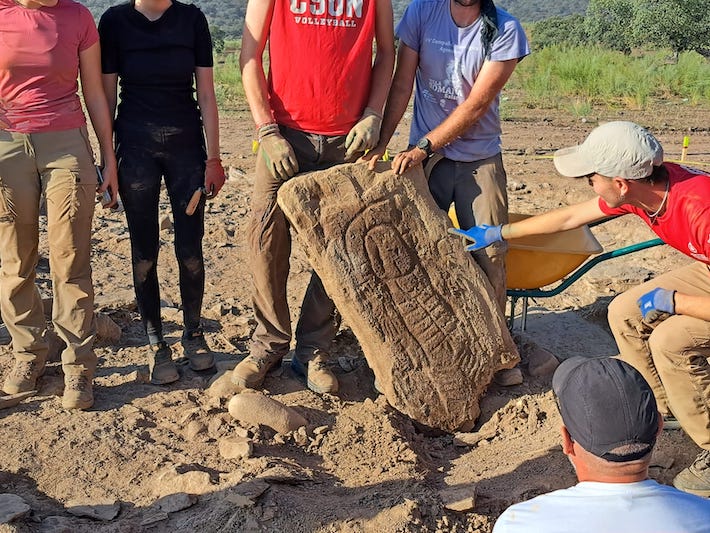 CAÑAVERAL DE LEÓN, SPAIN—According to a statement released by Durham University, a third stela has been unearthed in Spain at the 3,000-year-old necropolis known as Las Capellanías by a team of researchers from Durham University, Seville University, the University of Southampton, and Huelva University. The site is located on a route that linked main river basins in southern Spain, suggesting that the carved stone slabs may have served as territorial markers, in addition to honoring the dead. The newly uncovered stela, found with cremated human bones, is carved with an image of a human figure with a detailed face, hands, feet, a headdress, necklace, two swords, and male genitals. It had been previously thought that a headdress and necklace on a stela would represent a female form, while weaponry would signify a male warrior. The researchers now suggest that the monuments are evidence of more fluid social roles that were not restricted by gender. To read about the rich burial of a Bronze Age woman that was uncovered in southeast Spain, go to "Crowning Glory."
CAÑAVERAL DE LEÓN, SPAIN—According to a statement released by Durham University, a third stela has been unearthed in Spain at the 3,000-year-old necropolis known as Las Capellanías by a team of researchers from Durham University, Seville University, the University of Southampton, and Huelva University. The site is located on a route that linked main river basins in southern Spain, suggesting that the carved stone slabs may have served as territorial markers, in addition to honoring the dead. The newly uncovered stela, found with cremated human bones, is carved with an image of a human figure with a detailed face, hands, feet, a headdress, necklace, two swords, and male genitals. It had been previously thought that a headdress and necklace on a stela would represent a female form, while weaponry would signify a male warrior. The researchers now suggest that the monuments are evidence of more fluid social roles that were not restricted by gender. To read about the rich burial of a Bronze Age woman that was uncovered in southeast Spain, go to "Crowning Glory."
3,000-Year-Old Funerary Stela Unearthed in Spain
